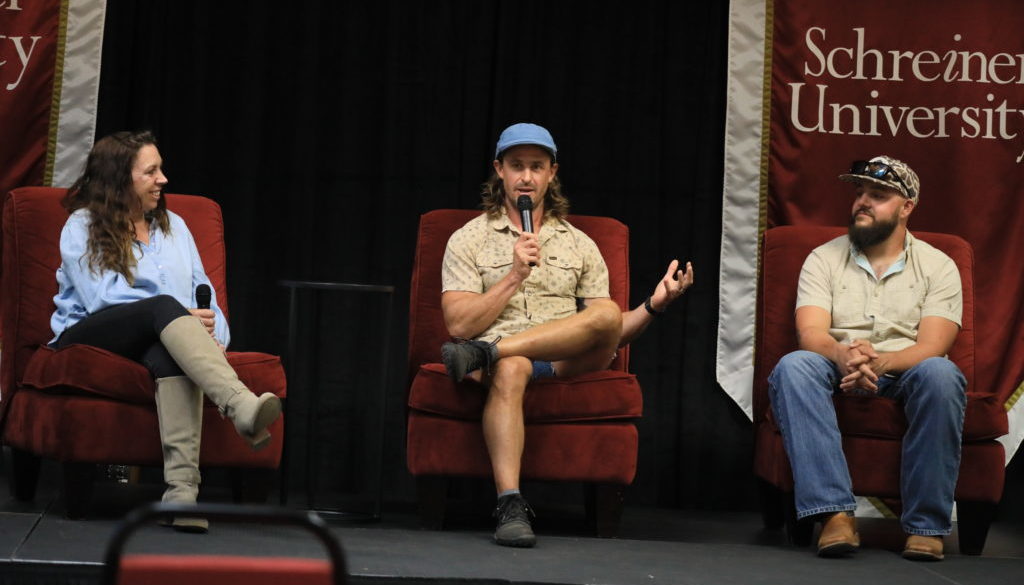Schreiner University and the Riverside Nature Center teamed up to celebrate Earth Day with a screening of the documentary “Common Ground” followed by a panel of local farmers who use regenerative farming techniques.
The documentary “Common Ground” explores the different methods of farming that are aimed at reversing the negative effects of climate change. These techniques, known as regenerative farming, focus on improving topsoil conditions for better carbon absorption, lowering pesticide and fertilizer usage, and mitigating climate change in the process.
Regenerative farming practices include minimal tilling, using cover crops and rotating species between harvests, as well as integrating wildlife back into the ecosystem for a more complete growth cycle that mimics nature.
Hill Country farms that utilize these regenerative practices include Sovereignty Ranch in Bandera and Ranch Roam Ranch in Fredericksburg. Representatives from both ranches advocated heavily for regenerative, soil-improving farming techniques while providing advice for local homeowners and gardeners alike.
“One element we originally missed out on in our journey was soil. Once we found out how to care for it properly, we never turned back. All of human health depends on the health of the soil. Whether you eat plants or whether you eat meat, our underlying foundation for resilience and vitality has everything to do with the soil,” said Taylor Collins, co-founder of Roam Ranch.
Since not everyone tends to their own farm or ranch, Mollie Engelhart co-owner of Sovereignty Ranch, encourages community members to support regenerative farms in any way possible.
“It’s really important that each one of us vote with our dollars, as trite as that sounds–even if that means driving a little bit extra to pick up milk or eggs from a local farmer. When you’re thinking of where to have a birthday party or wedding, have it on a farm. There’s so many ways that we can support farmers that you can’t even imagine,” said Engelhart.
Both Collins and Engelhart operate their farms with an emphasis on increasing soil fertility and wildlife biodiversity.
“The number one offender of soil health in central Texas is bare soil. With no topsoil, you’re going to break your water cycle, your nutrient cycle, your energy cycle–all the different cycles in nature are shattered,” said Collins.
To cover bare soil, Roam Ranch land steward James Tomeny gave his tried-and-true method for creating healthy and fertile soil.
“I spread a whole lot of hay as far as covering bare soil goes. For all of our bare soil areas, I take the round bales and I’ll roll those out. Then take a pitch fork and spread it out a little further. If you do it two years in a row, you’re gonna have grass the next year,” said Tomeny.
By increasing biodiversity and focusing on soil conditions, regenerative farmers use practices that will improve soil fertility as well as its ability to absorb carbon from the atmosphere and retain water. Healthy soil reduces greenhouse gases while also reducing surface runoff water and reducing flooding.
For more information about gardening, farming, and conservation in the Hill Country, check out the resources available at the Riverside Nature Center by visiting www.riversidenaturecenter.org.
